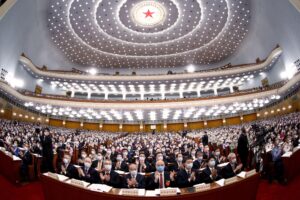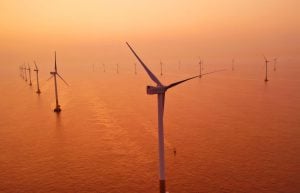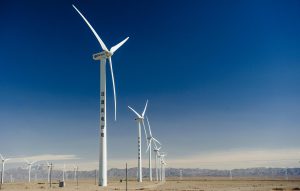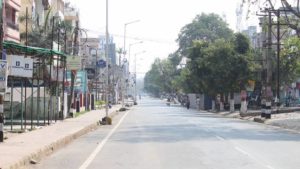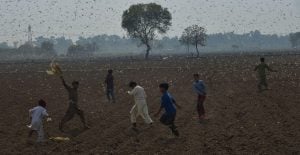Editor’s Note: The 2020 Twin Sessions finished on 28 May. During the meeting, some highly anticipated policy items touched on by this article a week ago were confirmed:
• No GDP growth target for 2020. This year’s Report on the Work of the Government by Premier Li Keqiang did not set a GDP growth target for China, the first such omission since 2002. The move reflects the uncertainty caused by Covid-19. Before the Twin Sessions, prominent economists such as Ma Jun had called for the abandonment of this year’s growth target for fear that unrealistic targets could lead to ill-considered stimulus projects.
• Fiscal stimulus package smaller than expected. The NPC passed a 6.35 trillion yuan (US$895 billion) fiscal stimulus package, which includes adding 1 trillion yuan to the central government budget, issuing 1 trillion yuan of special purpose treasury bonds, 3.75 trillion yuan of special-purpose local government bonds, and 600 billion yuan of central government investment budget. Those figures were lower than many expected. Observers had believed that local government bonds, mainly used for potentially polluting and carbon-intensive infrastructure projects, would exceed 4 trillion yuan. At the Premier’s annual press conference after the Twin Sessions, Li Keqiang then emphasised that spurring consumption, rather than infrastructure investment, was the priority for the government’s recovery plan.
• Multiple proposals on wildlife and animal protection. As expected, animal protection was a key area for legislators and political advisors this year, given the possible link between Covid-19 and the wildlife trade. Multiple NPC members and CPPCC members have tabled proposals to strengthen wild animal protection, including proposals to penalise wildlife consumption with criminal law. There was also a joint proposal by 30 NPC members to set up a comprehensive Animal Protection Law to bring companion animals, farm animals and other non-wildlife animals into the legal protection framework. Proposals at the Twin Sessions do not necessarily translate into actual legislation, but voices by elite members of the political system can set the tone for policymaking in the coming months.
Even though parts of the country are still battling a minor rebound of Covid-19 cases, the general message is clear: China has emerged from the abysmal months of lockdown and is ready to resume business. This was made clear to the entire nation on 29 April with the announcement of new dates for the “Twin Sessions” meeting, the country’s most significant annual political and legislative affair, involving the National People’s Congress (NPC) and Chinese People’s Political Consultative Conference (CPPCC).
Starting from 21 May, thousands of legislators and political advisors will gather in Beijing’s Hall of the People to discuss and vote on pressing issues facing the country. The gathering, which should have happened in early March, was postponed for more than two months this year due to Covid-19. Now its restart, reportedly cut short from a two-week event to just one week, is widely considered a reflection of the top leadership’s confidence that a level of normalcy can be restored in Chinese society.
Despite the reassuring symbolic meaning of the Twin Sessions, the social and economic landscape is bleak as China begins its slow recovery from Covid-19. The country’s economy shrank 6.8% in the first quarter of 2020, and a full recovery is far from a certainty given the ongoing nature of the global pandemic. The unemployment rate has risen in the same period. The world will be watching how the Chinese government addresses these challenges through the outcomes of the annual conference. Measures will not just shape the trajectory of the Chinese economy but also global objectives of economic recovery, fighting climate change and achieving long-term sustainability. Here are a few key items to watch for at the Twin Sessions.
Economic growth target
At every year’s Twin Sessions, the Chinese premier will make a formal report to legislators about the government’s work in the past year and, more importantly, lay out key economic and social development targets for the coming year. These targets include rates of GDP growth, unemployment, Consumer Price Index (CPI) change reflecting inflation, and poverty reduction. By the end of the meeting, legislators will vote to adopt those targets to make them binding for the executive branch. That is the order of business in a normal year.
In a year of pandemic, the severe disruption to economic and political processes have made setting the 2020 targets a contentious business. Now all eyes are on Premier Li Keqiang’s Report on the Work of the Government as the country enters the last week of May without a clear idea how the central government plans to set the speed for the economic engine this year.
This is a year of paramount importance for the Party. By the end of 2020, the country’s GDP is supposed to achieve a doubling from 2010 levels, a key political commitment made by the Party to Chinese society. The growth rate needs to hit about 5.5% this year to secure the objective. But Covid-19 has knocked the economy off track by a wide margin.
Prominent Chinese economists have weighed in. Justin Lin, a top economic advisor and former Chief Economist at the World Bank, recommended a moderate target of 3% to avoid maxing out China’s monetary and fiscal policy tools. As the economy shrank in the first quarter and is only mildly recovering in the second, China needs to achieve a 15% growth rate in the second half of 2020 to maintain the 2020 “doubling” goal. Lin argues that even if China is able to stimulate economic expansion to that level, it should opt for a slightly lower target to save some ammunition for next year. “It is totally acceptable to defer the (doubling) goal to next year,” he told the audience of a Peking University webinar on 15 May.
Chasing unrealistic targets will lead to massive stimulus measures in debt-driven infrastructure building that is often short-sighted and ill-considered
On the other hand, Ma Jun, chairman of China Green Finance Committee and a member of the People’s Bank of China’s monetary policy committee, has advocated for an outright abandonment of any economic growth target for 2020, citing concerns that chasing unrealistic targets will lead to massive stimulus measures in debt-driven infrastructure building that is often short-sighted and ill-considered.
A 13 May article by He Lifeng, the head of the National Development and Reform Commission (NDRC), China’s top economic policymaking body, indicates that the government may still choose to adhere to its original economic goal. “We should make sure we complete the task of building a moderately prosperous society,” he wrote. Doubling GDP by 2020 is a key component of that vision.
Stimulus package
The growth rate target is closely linked with how China determines the size of its economic stimulus package. According to the 2015 Budget Law, key components of the fiscal toolbox, including quotas for central government and local government bond issuance, must be approved by the National People’s Congress.
Liu Yuanchun, vice president of Renmin University, told Caijing magazine that to create 1% GDP growth, fiscal spending should reach 1.2-1.4 trillion yuan (US$170-200 billion).
By the end of April, the Ministry of Finance had front-loaded the local government bond issuance quota to the tune of 2.29 trillion yuan (US$320 billion), and before total annual quotas could be approved at the Twin Sessions. The majority of local government special bonds go into infrastructure projects such as railway construction and public transportation, whose carbon footprints will have implications for global efforts to address climate change.
Green legislation and planning
Covid-19 has triggered a national conversation about the relationship between humans and nature, as scientists have linked the novel coronavirus to human contact with wild animals. The conversation was quickly followed by legislative actions. On 24 February, the NPC Standing Committee passed a decision banning consumption of wild animals for food, leaving only limited exemptions for certain species commonly bred in captivity. The national legislature is expected to revamp the Wildlife Protection Law following the decision. According to a legislative plan released by the NPC Standing Committee, the law revision process will likely culminate in 2021. Therefore, this year’s Twin Sessions probably won’t see definitive progress on the Wildlife Protection law, even though legislators may use the platform to submit proposals and recommendations.
Meanwhile, deliberations on the 14th Five Year Plan (2021-2025) will start in earnest this year, ready for its delivery to the next Twin Sessions in 2021 for final approval. According to schedules released by national authorities, draft versions of sectoral 14th Five Year Plans (such as for renewable energy) should be available for comment in late 2020.
In a critical year for China’s political and economic calendar, the pandemic has created unprecedented disruption. The coming week will demonstrate how China plans to pull itself back on track, with outcomes that will have far-reaching global consequences.
